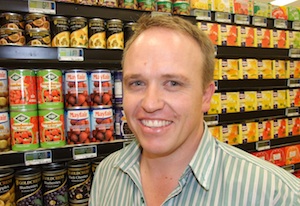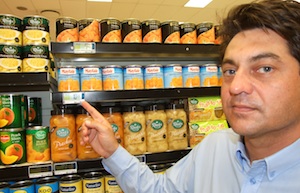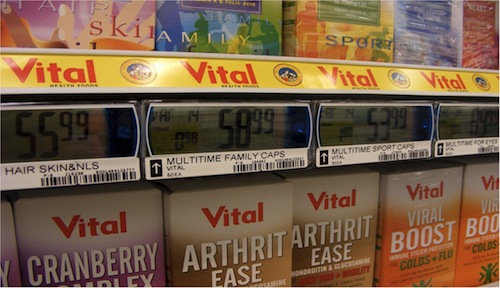If you go to the Broadacres SuperSpar in Johannesburg’s far north, you’ll notice something out of the ordinary on the shelves. In the place of the usual paper price labels and barcodes are electronic tags displaying the prices of the products on sale.
If you’ve been in a supermarket in Western Europe or Japan in the last couple of years, there’s a good chance you’ve already seen electronic shelf labelling, or ESL, in action.
Now the technology is starting to make its presence felt in SA supermarkets, with 84 Spar outlets having rolled it out and Pick n Pay trialling the technology in its stores in KwaZulu-Natal. Metcash Group has also deployed the technology at its Trade Centre stores.
Each paper-based shelf label is replaced with an electronic tag — each of these tags costs R85 and a supermarket like a SuperSpar requires about 10 000 to 15 000 of them.
For Broadacres SuperSpar, deploying ESL technology has led to what co-owner Vernon Tarr calls a “small cost-saving”. It was able to reduce its labelling supervisors from two to one.

However, this wasn’t the main reason Broadacres deployed the system. “Our decision was more for customers. We wanted reliability and to reduce mistakes that were creeping in using the old system of paper-based labelling,” Tarr says.
The new system has resulted in far fewer disputes over prices at the tills, which in turn has improved customer loyalty. Prices are set on a central computer and updated wirelessly throughout the store.
“Incorrect labelling was getting quite bad. [During certain times of the year] we could be changing 2 000 labels a week,” Tarr says. “That’s led to huge complaints about mislabelling and that’s when we decided to put the system in.”
Tarr says Broadacres SuperSpar has integrated the ESL technology with its back-end goods management system, making it easier to manage ordering and to keep stock at optimal levels.
“The system gives us a good idea of what should be in stock, though there is always pilfering.”

Another Spar outlet, the Parklane SuperSpar in Pietermaritzburg, says it has recorded a 1% improvement in gross profit on groceries since installing the same ESL technology.
Parklane owner Cameron McKenzie says the supermarket decided to implement the system because of recent inflationary conditions where prices were rising more frequently than usual.
“In times of low inflation, prices are relatively stable and we don’t have to effect shelf prices too often,” McKenzie says. “But when prices change often, it is costly and disruptive to change the paper labels, especially in a large store such as ours.
“We had to employ five people just to do this menial job, and still there were many discrepancies at point of sale, which hurt our customer service image.”
The Broadacres and Parklane systems, which use technology from a Swedish company called Pricer, were supplied by Skydirect, a subsidiary of local IT group Xon.
Skydirect MD Hendrik Bredenkamp explains that the system uses “induced infrared” technology to facilitate communication between the electronic shelf labels and the back-office system. Infrared readers are mounted at strategic positions in the roof of a supermarket.
Induced infrared communication doesn’t require line of sight. It is also less energy hungry, so the batteries inside the electronic labels last a lot longer — up to 10 years — than they would if they used radio frequency technology instead. Also, infrared is faster than RF, so prices can be populated across a store a lot quicker.
Bredenkamp believes the potential for the technology in SA is huge. “Spar alone has about 800 stores and we’ve only done 84 of those so far,” he says. “Shoprite also has about 800 stores, and Pick n Pay has 500 or 600.” — Duncan McLeod, TechCentral





